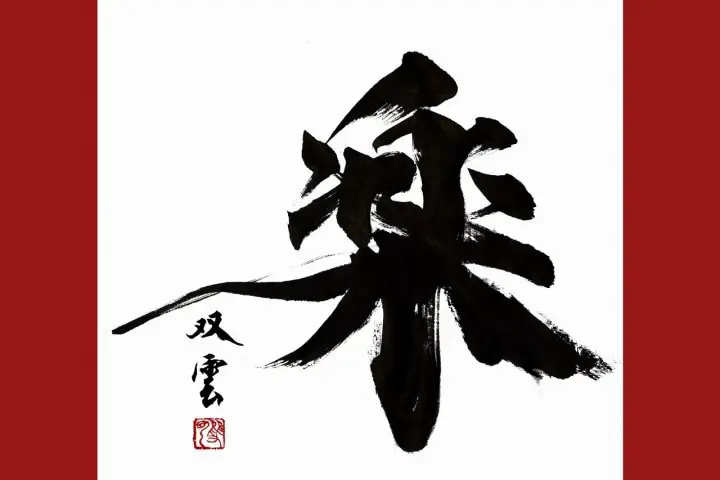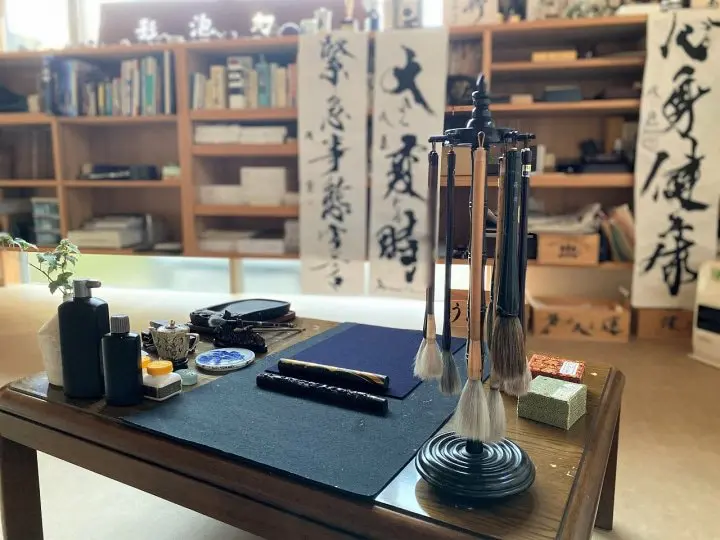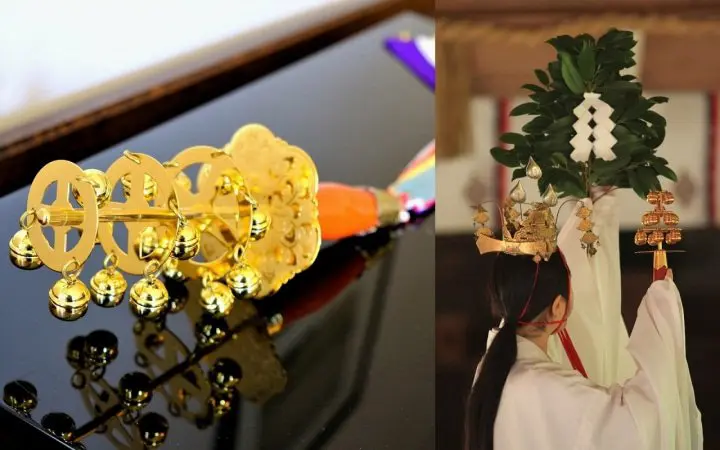Essays on Japanese Culture: Souun's Art Theme “Joyfulness”

In this essay series, Souun Takeda, a calligrapher and contemporary artist, introduces Japanese culture. This final essay is about “joyfulness,” the main theme of his artwork. As the artist creates a relaxing atmosphere for himself, he hopes the same is experienced by those who appreciate his work.
Souun Takeda: Calligrapher and Contemporary Artist

Picture courtesy of Souun Takeda Office
Souun Takeda, who hails from Kumamoto, is a calligrapher and contemporary artist born in 1975. After working as a company employee, he launched his career as a calligrapher in 2001. Since then, he has produced various title credits for TV programs and movies. Currently, he hosts calligraphy workshops and exhibitions worldwide.
In this series, Souun talks about the essence of Japanese culture through calligraphy.
Final Essay: "Joyfulness" as Souun's Personal Art Theme

“Joyfulness” (the kanji 楽 "raku") by Souun Takeda. Picture courtesy of Souun Takeda Office
This is the tenth and final installment of my essay series on Japanese culture. While I have written about the history and tools of calligraphy, the last essay will be about the kanji character for "joyfulness," a personal theme in my artwork.
As mentioned in the second essay, I used to work for a major telecommunications company. After resigning, I started my career as a calligrapher but had no clear goals at the time.
The only rule I had was to write someone's name or a product logo upon request. There were no role models, so I didn't know where to go from there.
That's when the light bulb came on. What if I chose a single letter as my motif?
I started writing my favorite kanji characters such as "kokorozashi" (will), "megumi" (grace), "bi" (beauty), "kagayaki" (glittering), "yume" (dream), "raku" (ease/joyfulness), "tamashii" (soul), and "warau" (laugh) with a brush. The purpose of this activity was to discover a character that would get me excited. In the end, it was the letter 楽 raku which thrilled me the most.
I decided on 楽 "raku," which translates as "joyfulness" or "ease" as my personal art theme.
楽 "raku" has two meanings: "a calm state of mind and body" and "to have fun." To entertain others and have them relax. To have fun and relax. I was determined to become an expert on these four attitudes.
But it was easier said than done.
For instance, I couldn't loosen up in front of other people. Additionally, I couldn't enjoy the daily routine of brushing my teeth, changing clothes, or doing laundry.

Calligraphy classroom. Picture courtesy of Souun Takeda Office
So, I started to imagine myself as a monk practicing asceticism to see if I was in a relaxed state of mind, leading to quite a few discoveries.
First of all, to make someone feel at ease, you have to understand their pain. To make someone happy, you have to grasp what makes them bored.
I also realized that I was being unnecessarily tense. So now, after taking a bath, I try to relax or have fun just by drying myself. This mindset has energized my artwork. And, it seems, many people who see my work get to feel this attitude.
However, the most significant discovery for me was that to have fun, you have to change dull chores and daily routines into something that can be enjoyed.

Bells used in shrine rituals. Photos by Pixta
The kanji character 楽 "raku" originates from the image of one of the small bells rung during shrine rituals for the harvesting season. This type of bell transforms the power of deities into sound.
In the end, I think that this character expresses gratitude. I hope to continue studying and practicing its meaning in everyday life.
Thank you for reading my series of essays.
Born in 1975 in Kumamoto. After graduating from the Tokyo University of Science, we worked for NTT, then started his career as a calligrapher. He has produced various title cards for TV programs and movies, including TV series by NHK. In 2020, he held his first individual contemporary art exhibition. Currently, he holds calligraphy workshops and exhibitions all over the world.




























![[Reopening in March 2026] Ikoma Sanjo Amusement Park Park, 45 minutes from Osaka , with free admission](https://resources.matcha-jp.com/resize/720x2000/2024/08/28-194409.webp)
![[Gunma] 5 recommended gourmet foods at Kawaba Denen Plaza Roadside Station!](https://resources.matcha-jp.com/resize/720x2000/2025/02/26-225970.webp)
![[Kanazawa] Enjoy the world of gold leaf to the fullest in the city with the highest production volume in Japan](https://resources.matcha-jp.com/resize/720x2000/2025/11/12-249564.webp)
![[2026] Family Winter Trip to Suzuka Circuit! – For Both Day trips and Overnight Stays!](https://resources.matcha-jp.com/resize/720x2000/2025/12/26-254097.webp)
